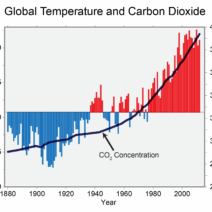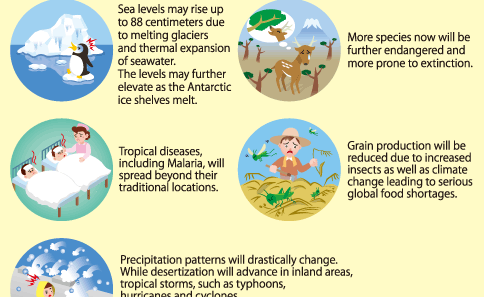Greenhouse farming represents a burgeoning frontier in agricultural practices, one that holds the potential to mitigate the perils of climate change while simultaneously yielding sustenance for a growing global population. As the climate crisis escalates, the necessity for innovative methods to decrease greenhouse gas emissions has never been more pressing. This exploration delves into how greenhouse farming, fortified by sustainable practices, can emerge as a pivotal solution in reducing global warming.
The Paradox of Agriculture and Greenhouse Gases
Traditionally, agriculture has been viewed as a major contributor to greenhouse gas emissions, primarily through processes such as deforestation, soil degradation, and the extensive use of fertilizers. However, the paradigm is shifting. Greenhouse farming has innovative attributes that can transform traditional farming’s carbon footprint. This is achieved through controlled environments, precise resource management, and optimization of crop yields.
Defining Greenhouse Farming
Greenhouse farming, also known as protected cultivation, involves growing plants in structures designed to control environmental factors such as temperature, humidity, and light. By creating ideal conditions, growers can enhance crop productivity while reducing reliance on chemical inputs. Moreover, these controlled environments can decrease the need for transportation and storage, further lessening their carbon footprint.
Carbon Sequestration Potential
One of the most captivating benefits of greenhouse farming is its inherent capacity for carbon sequestration. The controlled environment maximizes photosynthesis, where plants absorb carbon dioxide (CO2) from the atmosphere and store carbon in their biomass. This biological process is fundamental in lowering atmospheric CO2 levels, one of the principal greenhouse gases driving global warming.
Water Efficiency
Water scarcity looms as a significant challenge in agriculture amidst climate change. Greenhouse farming employs innovative irrigation systems, such as drip irrigation and hydroponics, which significantly reduce water consumption compared to traditional farming methods. By maximizing water use efficiency, greenhouse farms not only nurture crops but also help mitigate the overall water stress on surrounding ecosystems. The reintroduction of this precious resource back into the local hydrological cycle can further enhance regional resilience against climate change.
Reduction of Chemical Inputs
The application of synthetic fertilizers and pesticides contributes extensively to greenhouse gas emissions. Greenhouse farming frequently embraces organic practices, integrated pest management, and the use of biopesticides. Such practices diminish the dependency on harmful chemicals, promoting soil health and biodiversity while fostering a more sustainable approach to agriculture.
Local Food Production and Reduced Transportation Emissions
As urbanization accelerates, local food production systems become increasingly vital. Greenhouses can be established in urban areas, providing fresh produce directly to local communities. By shortening the supply chain, the emissions from transportation are substantially reduced. Consequently, consumers gain access to fresher, more nutritious food while contributing to lower carbon emissions.
Energy Efficiency and Renewable Sources
While it is essential to recognize the energy costs associated with maintaining a greenhouse, many operations invest in energy-efficient technologies and renewable energy sources. Utilizing solar panels for electricity or employing geothermal systems for heating can significantly diminish the reliance on fossil fuels. Consequently, this transition not only lessens the operational carbon footprint of greenhouse farming but also exemplifies the potential for agricultural sectors to lead the way in energy innovation.
Smart Technology Integration
The rise of precision agriculture and smart technology is revolutionizing greenhouse farming practices. Sensors and automated systems monitor environmental conditions continuously, allowing growers to make real-time adjustments to optimize performance. This not only enhances crop yield but also conserves resources, decreasing waste and minimizing environmental impacts. Innovations like AI and data analytics pave the way for a granular understanding of plant health, thereby ensuring that each resource is employed judiciously.
Community Engagement and Education
Greenhouse farming also serves as a platform for community engagement and awareness about sustainable practices. Education programs and workshops can empower individuals and local farmers to understand the significance of sustainable agriculture. By cultivating an informed populace that recognizes the urgency of climate action, greenhouse farmers can catalyze a grassroots movement toward sustainability.
The Road Ahead: Challenges and Considerations
Despite the promising vistas that greenhouse farming may provide, challenges remain. Initial capital investment can be a barrier for many emerging farmers. Additionally, knowledge transfer and access to technology must be improved to facilitate widespread adoption. However, with collective effort—government incentives, community support, and international collaboration—these challenges can be surmounted, unlocking the full potential of greenhouse farming.
The Convergence of Innovation and Tradition
As we stand at the precipice of an ecological crisis, the question is not whether greenhouse farming can contribute to reducing global warming, but how effectively it can be implemented at scale. The amalgamation of innovation and sustainable practices offers a gateway to transforming the agricultural sector into a guardian of environmental integrity. By embracing this paradigm shift, we can not only cultivate healthier crops but also a healthier planet, illustrating a symbiotic relationship between humanity and nature.
In conclusion, greenhouse farming embodies a beacon of hope in our strife against climate change. Through sustainable practices that enhance productivity while reducing emissions, it promises a multifaceted approach to supporting global food security while safeguarding our planet. The time has arrived to invest in this promising avenue, harnessing the potential of agricultural innovation for a sustainable future.







